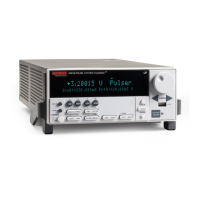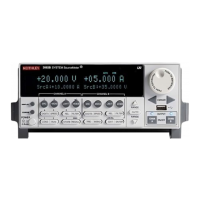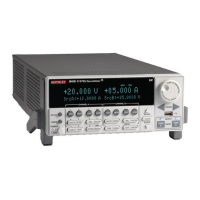The figure below shows the equivalent circuit for the adapter.
Figure 50: 7078-TRX-BNC equivalent circuit
GPIB connections
The 4200A-SCS controls the 590 through the General Purpose Interface Bus (GPIB). Use the 7007-1
or 7007-2 GPIB cable to connect the GPIB of the 590 to the GPIB of the 4200A-SCS.
Cable compensation
Signal pathways through the test cables, switch matrix, test fixture, and prober contribute unwanted
capacitances that may adversely affect the measurement.
To correct for these unwanted capacitances, you should do cable compensation before measuring
the capacitance of DUT. In general, you do cable compensation by connecting precisely known
capacitance sources in place of the DUT and then measuring them. The 590 then uses these
measured values to make corrections when measuring the DUT.
During cable compensation:
1. The 590 calculates the compensation parameters based on the comparison between the given
and measured values.
2. The 590 makes a probe-up offset measurement and suppresses any remaining offset
capacitance. This step is done every time a new measurement is made.
Typically, cable compensation is done for all measurement ranges (2 pF, 20 pF, 200 pF, and 2 nF) of
the 590. Once cable compensation is done, it does not have to be done again unless the connections
to the DUT are changed or power is cycled.
For each measurement range of the 590, you must use a low-capacitance source and a
high-capacitance source. The following table lists the Keithley Instruments Model 5909 capacitance
sources that can be used for each 590 range.

